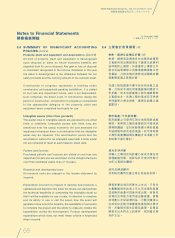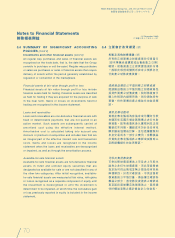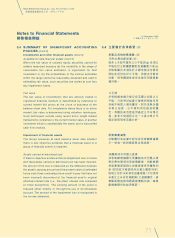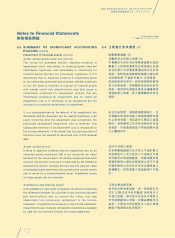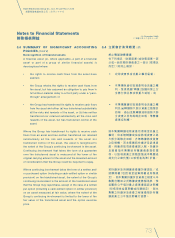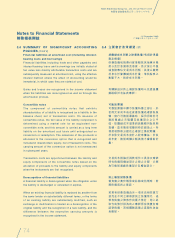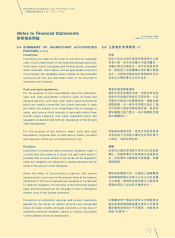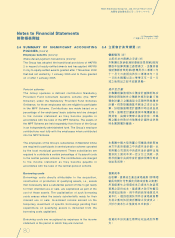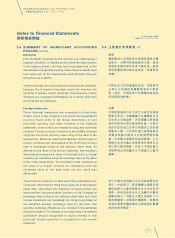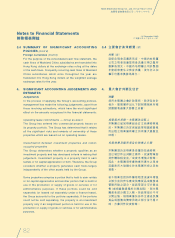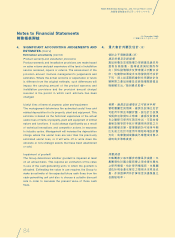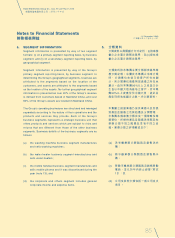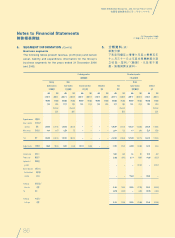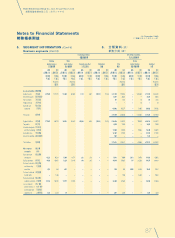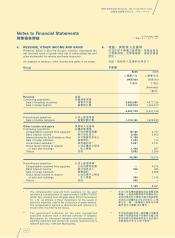Haier 2006 Annual Report Download - page 79
Download and view the complete annual report
Please find page 79 of the 2006 Haier annual report below. You can navigate through the pages in the report by either clicking on the pages listed below, or by using the keyword search tool below to find specific information within the annual report.
Notes to Financial Statements
財務報表附註 (31 December 2006)
(二零零六年十二月三十一日)
78
Haier Electronics Group Co., Ltd. Annual Report 2006
海爾電器集團有限公司 二零零六年年報
3.4 SUMMARY OF SIGNIFICANT ACCOUNTING
POLICIES
(Cont’d)
Revenue recognition
Revenue is recognised when it is probable that the economic
benefits will flow to the Group and when the revenue can be
measured reliably, on the following bases:
(a) from the sale of goods, when the significant risks and
rewards of ownership have been transferred to the buyer,
provided that the Group maintains neither managerial
involvement to the degree usually associated with
ownership, nor effective control over the goods sold;
(b) rental income, on a time proportion basis over the lease
terms; and
(c) interest income, on an accrual basis using the effective
interest method by applying the rate that discounts the
estimated future cash receipts through the expected life
of the financial instrument to the net carrying amount of
the financial asset.
Employee benefits
Share-based payment transactions
The Company operates a share option scheme for the purpose
of providing incentives and rewards to eligible participants
who contribute to the success of the Group’s operations.
Employees (including directors) of the Group receive
remuneration in the form of share-based payment transactions,
whereby employees render services as consideration for equity
instruments (“equity-settled transactions”).
The cost of equity-settled transactions with employees is
measured by reference to the fair value at the date at which
they are granted. The fair value is determined using the Black-
Scholes Option Model, further details of which are given in
note 35 to the financial statements. In valuing equity-settled
transactions, no account is taken of any performance
conditions, other than conditions linked to the price of the
shares of the Company (“market conditions”), if applicable.
3.4 主要會計政策概要
(續)
收入確認
收入乃於本集團可取得經濟利益且能可
靠地計算時按以下基準確認:
(a) 銷售貨物收入,於擁有權之大部分
風險及回報已轉移至買方而本集團
不涉及通常與擁有權聯繫之管理亦
無實際上控制售出之貨物時確認;
(b) 租金收入,按物業租期按時間比例
確認;及
(c) 利息收入,根據實際利率法按應計
基準以可將財務資產預期期限之估
計未來現金回報貼現為財務資產賬
面淨值之比率計算。
僱員福利
以股份支付報酬之交易
本公司設立購股權計劃,目的在於激勵
及獎勵對本集團業務成功作出貢獻之合
資格參與者。本集團僱員(包括董事)獲
取股份支付報酬形式之薪酬,而僱員則
提供服務作為股本工具之代價(「股本結
算交易」)。
與僱員進行股本結算交易之成本乃參考
授出當日之公平值釐定。公平值採用柏
力克—舒爾斯期權模式釐定,進一步詳
情載於財務報表附註35。於釐定股本結
算交易之價值時,並不考慮任何表現條
件,惟有關本公司股價之條件(「市 況」)
(如適用)則除外。


